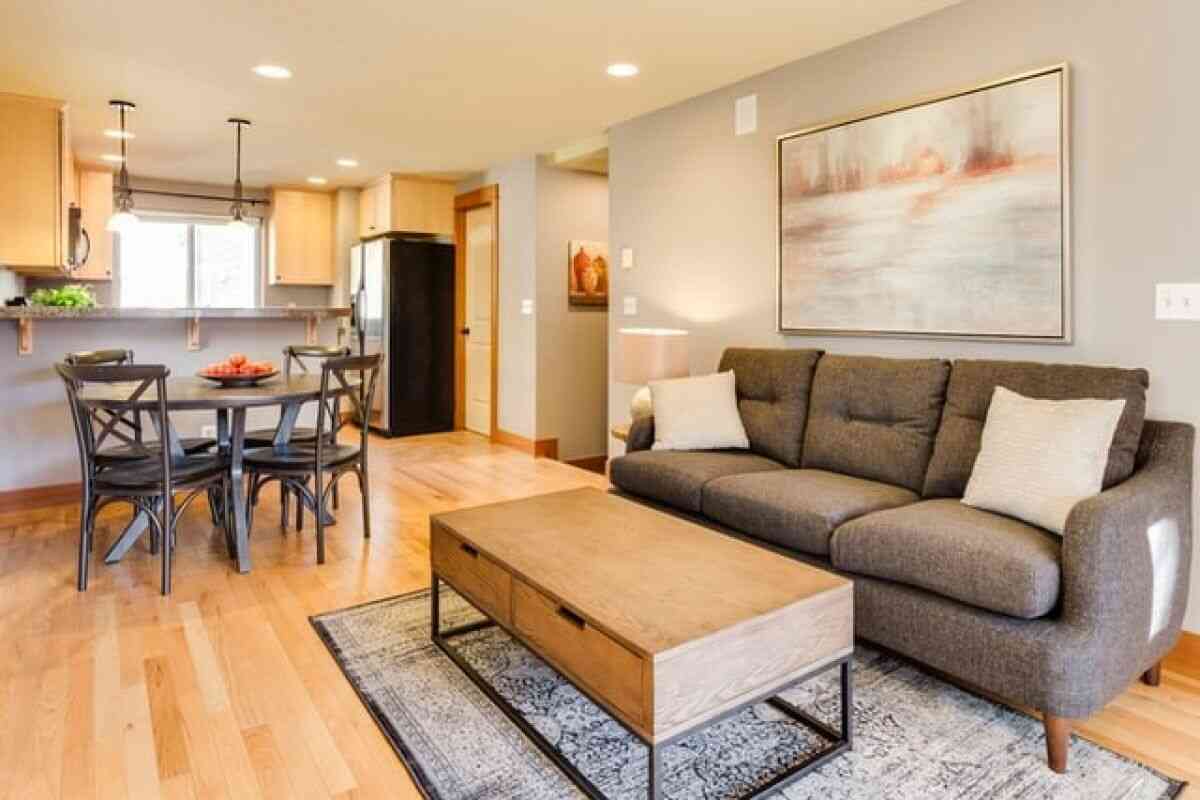How To Position Furniture In A Small Space/apartment

Small apartments don't have to feel awkward when you choose furniture and accessories that are designed for tiny spaces.
When you move into a small apartment, you look around and wonder how you’re going to make the space work with the furniture you have? Tiny spaces can be challenging but with a keen eye for detail and a few tips and tricks, you’ll find a way to create a comfortable and a functional apartment.
In this guide, we learn from the best and present tips from interior designers to help you transform even the smallest of apartments into what will feel like a spacious, free-flowing, and a practical home.
Let’s get to it!
The Living Room
A small living room can be a cozy and an intimate space, but it starts with the purpose for the room. Will it be used for entertainment, relaxation, and dining or only one of these purposes? If the living room is only going to be used for watching TV and relaxing, then perhaps a loveseat, coffee table, and floor lamp will be sufficient. If you are planning on having guests stay over, you'll need enough seating and free flow so you and your guests aren't continuously bumping into one another or having to sidestep furniture. A sleeper couch is a great choice in this instance and with so many designs available, you are sure to find the right addition.
Once you have planned the purpose of the room, look at the features you want to enhance. Large windows, a fireplace, or open-plan design are elements that you can use as a focal point and decorate around rather than conceal.
For a tiny living room, a large and oversized sofa may not always be the ideal choice. Sleek furniture that does not take up too much floor space can help you maintain a spacious living room.
If you have large windows, play it up with neutral drapes and beautiful tie backs. The more natural light you let in, the larger the room will look and feel.
Design Idea*
If you have a large window, most people tend to position the sofa under the window. For a narrow area, a bulky sofa below a window can make the section look more confined. Instead, you can position a loveseat with legs below a window or you can place your sofa in the centre of the room. Locate the television across from the sofa, preferably wall-mounted, and out of direct sunlight. The legs on the sofa will elevate the furniture and allow you to see the floor, so that it creates a sense of continuity. By positioning the couch in the middle of the room or against a solid wall, it keeps the window and the section below the window open, bright, and airy.
Use a large carpet underneath a coffee table or the sofa. The smaller the rug, the tinier the space will look and feel.
To create extra seating, use chairs with straight backs, long legs, and armless features rather than try to squeeze another sofa into the room. Items such as pouffes and ottomans are also great as casual seating and
The Bedroom
You can turn even the tiniest of bedrooms into an oasis when you know how to decorate. A lamp with a large base can make a small room feel cramped. Opt for a floor stand or a thin stemmed lamp instead. You should also pay close attention to your side tables and cabinets. You could also use a shelf ladder or storage tray next to your bed because these styles aren’t bulky and are backless which creates a sense of space.
Add throws, cushions, and a long length carpet for a narrow space.
The Best Color Choices and Accessories
Small rooms should be kept neutral. Colors such as cream, beige, grey, and even white creates uniformity and brightens the room. When you use neutral shades and accessorize with color, you draw the eye to the accessories rather than feel cramped by the color on the walls.
Cheap and effective accessories include indoor plants that bring a touch of greenery into the room. Whether real or artificial, you can place potted plants onto floating shelves, cabinets, and even your kitchen counter!
Pack Away and Reduce Clutter
The easiest way to improve the spaciousness of an apartment or a small room is by reducing the clutter. Get your belongings off the floor and into storage containers, onto shelves, or inside ottomans.
Items such as large and bulky furniture and lots of little items like small lamps, carpets, bookcases, and more should not be part of your tiny space. Many small items or pieces make a room feel cluttered while large furniture simply takes up too much floor space.
Look at pictures of apartments with a similar layout to that of your own. This will give you an idea of how to position furniture and which accessories you should include.
Remember, designing an interior takes some time. Invest in the items that will create the foundation or the "bones" of your apartment, then move on to adding extras from plants and paintings to scatter cushions, and lamps.


